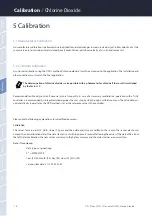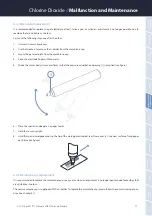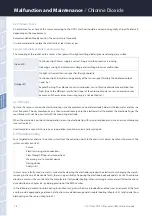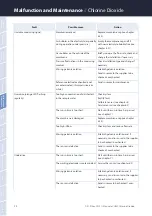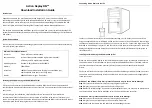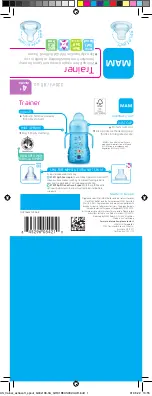
8
Us
e
Us
e
Calibr
ation
Calibr
ation
M
alfunc
tion and
M
ain
tenanc
e
M
alfunc
tion and
M
ain
tenanc
e
Comm-
issioning
Comm-
issioning
In
tr
oduc
tion
In
tr
oduc
tion
G
ener
al
Inf
or
ma
tion
G
ener
al
Inf
or
ma
tion
FA
Q
FA
Q
Technical
Da
ta
Technical
Da
ta
W
ar
ran
ty
W
ar
ran
ty
Cust
omer
ser
vic
e
Cust
omer ser
vic
e
Con
tac
t
Con
tac
t
Key
w
or
d
Inde
x
Key
w
or
d
Inde
x
Ac
cessor
ies
Ac
cessor
ies
D01-915en201911 Manual eCHEM Chlorine Dioxide
Commissioning
//
Chlorine Dioxide
3 Commissioning
This chapter deals with the commissioning of the chlorine dioxide sensor. Please pay particular attention to this section and
follow the safety precautions to protect the sensor from damage and yourself from injury. Prior to electrical installation (chap
-
ter 3.2) of the sensor, it must first be filled with gel electrolyte as described in chapter 3.1.
Before the sensor can be put into operation, it must be ensured that the sensor is securely attached and all connections are
correctly made.
The following installation requirements must be met:
•
Permanent power supply and presence of sample water
•
Flow rate according to data sheet
•
Constant flow rate
•
Disinfectant must be present in the sample water.
•
Galvanic isolation of the electrical connection (if not present in the sensor)
•
The sample water must not outgas at the measuring point.
3.1 Preparation of the Sensor for Commissioning
Some electrolytes contain diluted acids. Therefore, observe the warning notices on the
electrolyte bottle. Do not swallow the gel electrolyte. In case of skin or eye contact with the
electrolyte, rinse the affected areas thoroughly with water. Consult an ophthalmologist if the
eyes are reddened.
Gel electrolytes must not be shaken and must be stored upside down or on the sealing cap after
opening.
Remove the protective cap [3] from the membrane
cap [2].
Unscrew the membrane cap [2] from the sensor
body [1].
1
2
3
2.
1.
NOTICE
CAUTION
















